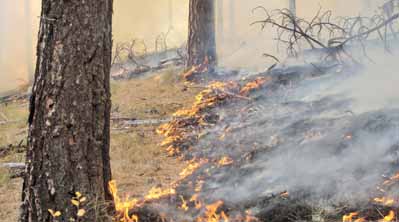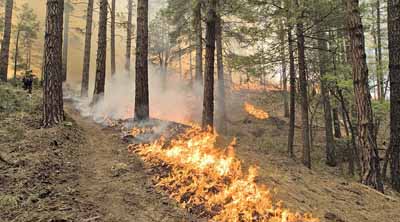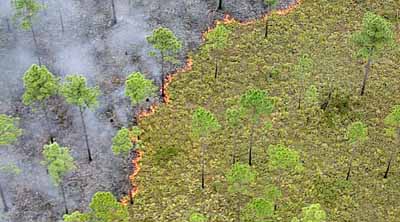Wildland Fire as a Natural Disturbance
Wildfire is a key natural disturbance process that shapes ecosystems throughout the United States. The ecological consequences of wildland fires depend on the type of fire, the type and structure of the ecosystem that burned, and the frequency of repeated fires. All these factors interact to define the fire's effects on an ecosystem and the ecosystem's response to the fire disturbance.
Wildfire is a natural disturbance that has a range of effects on biological and physical aspects of the environment. It creates conditions that temporarily favor some species and exclude others, and it is a major factor in shaping the way the Nation's forests look, especially in the Western United States.
To understand the effects of a wildland fire, it is important to consider the type of fire and the type and structure of the ecosystem in which the fire took place. Fires are generally categorized as ground fires, surface fires, understory fires, or crown fires. A ground fire consumes organic material beneath the surface litter, such as in a peat fire. Surface fires burn along the ground without significant movement into the understory or overstory vegetation. Understory fires burn the small shrubs and seedlings and are more intense than surface fires. Crown fires are normally associated with an understory fire that moves into the tree crowns and spreads from top to top of trees and/or shrubs.




